Writer: Tiffany Whisner, Coles Marketing
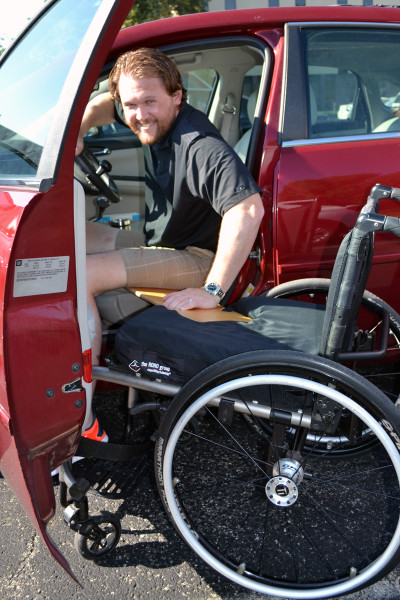 Getting behind the wheel of a car is a big deal. Now you have control of a machine that weighs a few thousand pounds. And now you have to navigate that vehicle in and out of traffic, dealing with weather hazards and all the temperaments of other drivers on the road.
Getting behind the wheel of a car is a big deal. Now you have control of a machine that weighs a few thousand pounds. And now you have to navigate that vehicle in and out of traffic, dealing with weather hazards and all the temperaments of other drivers on the road.
What if you also had to learn how to work mechanical hand controls or a foot accelerator?
Having and driving a car can mean greater independence for everyone, including people with disabilities, but there are also challenges that come along with getting the proper certifications and the appropriate equipment installed in a vehicle to make it accessible and usable for an individual with a disability.
Hitting the speed bumps
Suzanne Pritchard works with her clients to overcome those challenges.
“We see hundreds of people a year, and each one has an individual need for a customized solution,” she said. “It just depends on why they come to see us that determines how we help them.”
Pritchard is an occupational therapist and a certified driver rehabilitation specialist (CDRS) in the Assistive Technology Center at Easter Seals Crossroads. With her master’s degree in occupational therapy, she started out in the field of neuro rehab, helping people who had strokes or brain injuries.
“I loved what I was doing and I worked with a variety of patients every day, so when I was offered the driver rehab job at Easter Seals, it made me a little nervous because I wasn’t sure I wanted to specialize in a particular area so early in my career. That was almost 10 years ago.”
Currently, there are only about 360 active CRDS in the U.S. and Canada. Pritchard and colleague Mary Follman at Easter Seals are two of those specialists. And there is no lack of variety in their daily work.
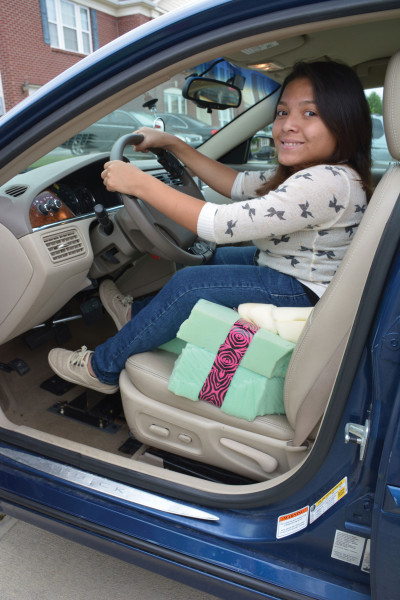 “There is a huge spectrum of challenges and diagnoses,” she said. “I work with people as young as 15 and as old as 97 with everything from spina bifida to multiple sclerosis and low-vision issues to spinal cord injuries.” But the goal for all of the clients is the same.
“There is a huge spectrum of challenges and diagnoses,” she said. “I work with people as young as 15 and as old as 97 with everything from spina bifida to multiple sclerosis and low-vision issues to spinal cord injuries.” But the goal for all of the clients is the same.
“They all want to remain drivers, regain their driving status or become new drivers,” Pritchard said. “It’s what drives them, literally. Driving a motor vehicle allows them to be the family members or employees they want to be and have access to the community and their independence. It’s very rewarding for them, and, therefore, very rewarding for me.”
Learn the rules of the road
Easter Seals Crossroads offers driver evaluation and training to all types of drivers, and vehicles are equipped with adaptations to closely match an individual’s physical needs, allowing the opportunity to operate the adaptive equipment in a controlled and safe environment.
“My days working with clients are so varied,” Pritchard said. “I could be doing an evaluation for a 40-year-old with a spinal cord injury in the morning, and an evaluation takes around three hours to complete, including setting up a plan and goals for the future. Then, I might be working with a 20-year-old with autism in the afternoon, doing a cognitive assessment to see if that individual will be able to handle driving. And I might end my day with a vehicle modification evaluation, getting into the nitty gritty of what equipment needs to go on a person’s vehicle to make it accessible to them.”
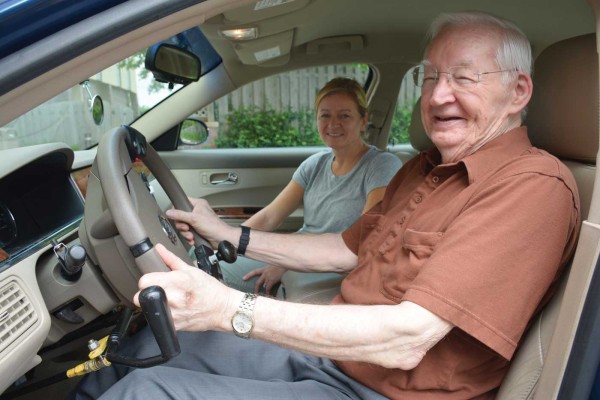 An assessment is both cognitive and physical — evaluating the individual’s mental flexibility, working memory and reasoning as well as physical abilities such as sitting balance, leg and foot movement and vision.
An assessment is both cognitive and physical — evaluating the individual’s mental flexibility, working memory and reasoning as well as physical abilities such as sitting balance, leg and foot movement and vision.
“The cognitive assessment is a lot more significant and in depth for someone with dementia, for example, and the physical evaluation is much more thorough for someone with multiple sclerosis,” Pritchard said. “Once we do a personal assessment, we get the person in a car, take them driving and test the equipment and what their control is like. From there, we set up a plan of care.”
What does a plan of care typically include?
“For a driver with dementia, it might only be one session to determine if that person is fit to continue driving or not,” Pritchard said. “But for a brand-new driver with cerebral palsy, the care plan might involve many sessions over several months to assess driving ability and get the proper training on whatever adaptive equipment is needed in the vehicle.”
There are many customized devices that are considered adaptive equipment, but the basic and most-used devices are mechanical hand controls, steering devices, left foot accelerators, transfer seats and reduced-effort steering wheels.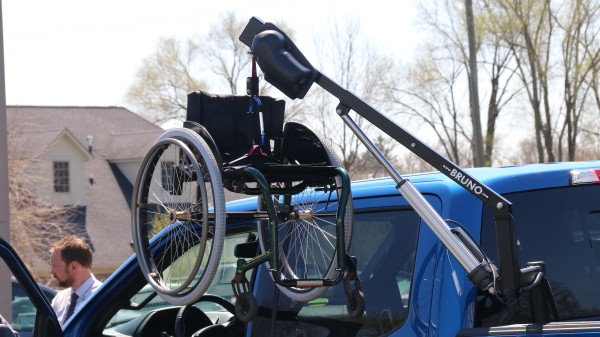
Easter Seals has three adaptive vehicles — two sedans and one minivan.
“Our vehicles are already equipped with the basic adaptive equipment needed for a person with a disability,” Pritchard said. “An individual can train in one of our vehicles to practice, and once he or she is fit and ready to use that particular device, we prescribe that equipment for a vehicle to be manufactured or modified.”
Each prescription is then filled by a mobility vehicle dealer like Superior Van & Mobility.
Rev up the engine, and excel-erate
“We have clients come in with all kinds of different requests, and we fit them with a vehicle customized to them and their needs,” said Dawn McCool, field marketing director at Superior Van & Mobility.
Superior started as a van conversion company in 1976, and as more people came to the company with requests to help with this challenge and add that piece of equipment, word of mouth helped the business grow.
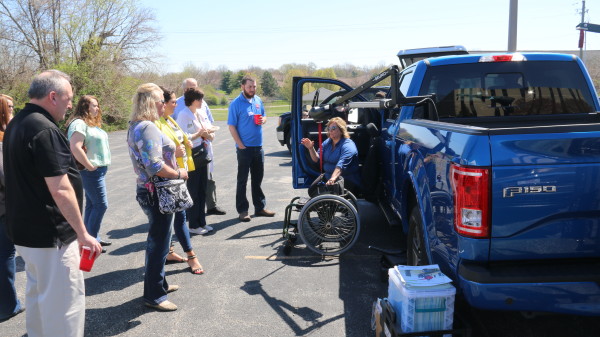 Then, in 1989, the National Mobility Equipment Dealers Association (NMEDA) was established, a trade association dedicated to expanding opportunities for people with disabilities to safely drive or be transported in vehicles modified with mobility equipment to fit their specific needs.
Then, in 1989, the National Mobility Equipment Dealers Association (NMEDA) was established, a trade association dedicated to expanding opportunities for people with disabilities to safely drive or be transported in vehicles modified with mobility equipment to fit their specific needs.
“NMEDA saw a need for safety standards when it came to modified vehicles for people with disabilities, and now the organization and its members can help customers find the best products for them that are regulated and safe,” McCool said.
NMEDA has more than 600 members, one of which is Superior Van & Mobility.
“We are a proud member of NMEDA and its quality assurance program,” she said. “We want to make sure our customers are getting only the highest-quality vehicles to drive.”
Each customer receives a custom needs assessment and a vehicle for specific needs, whether that is a wheelchair or scooter lift, hand controls, foot controls, tie-downs, bed toppers or restraint systems.
“These days you can’t even tell if someone is in an adaptive vehicle,” McCool said. “Technology is always changing, and manufacturers are always coming out with different options and different ways to create an accessible vehicle.”
One of those new options is the BraunAbility MXV. Built on the Ford Explorer chassis, it’s the first-ever wheelchair-accessible SUV.
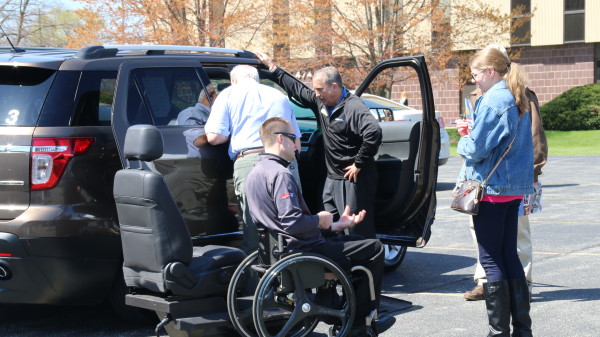 “It gives people another option,” McCool said. “It’s versatile and is geared toward the younger demographic of people who don’t want to drive a minivan. The industry is constantly evolving, and this is another game-changer. We are putting adaptive equipment in all types of vehicles now — hand controls in a Ferrari and foot controls in a Mustang. The industry is growing to cater to all wants, needs and desires.”
“It gives people another option,” McCool said. “It’s versatile and is geared toward the younger demographic of people who don’t want to drive a minivan. The industry is constantly evolving, and this is another game-changer. We are putting adaptive equipment in all types of vehicles now — hand controls in a Ferrari and foot controls in a Mustang. The industry is growing to cater to all wants, needs and desires.”
And to make sure she is always at the forefront of the latest trends and standards, McCool takes part in continuing education offered through NMEDA, such as the Comprehensive Automotive Mobility Solutions (CAMS) training.
“With this training, we can offer knowledge and awareness to local organizations like hospitals and schools,” she said. “We can train occupational therapists or those going to school for related degrees about the most up-to-date information on driving rehabilitation when working with people with disabilities. We can help prepare them for questions they might get from clients and patients and talk about how the mobility industry is there to help.”
Owning your own wheels
Another way for people to learn about adaptive driving and the mobility industry is through community outreach programs and events. Once such event was a full-day training through the INDATA Project.
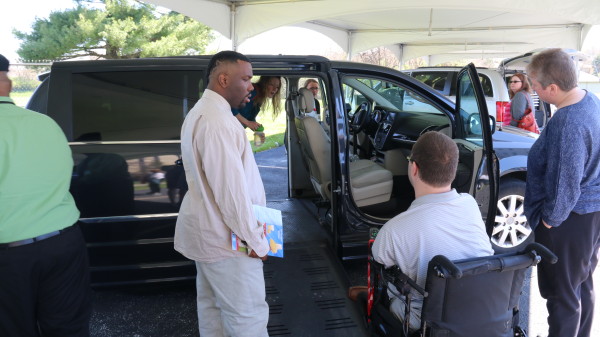 The training gave attendees the opportunity to learn about automotive transportation solutions from McCool as well as an evaluator’s perspective of driving with adaptive equipment from Pritchard. In addition, there was a hands-on vehicle expo during which time attendees could get an up-close look at a variety of adaptive vehicles and talk with either the drivers themselves or sales consultants who could answer specific vehicle questions.
The training gave attendees the opportunity to learn about automotive transportation solutions from McCool as well as an evaluator’s perspective of driving with adaptive equipment from Pritchard. In addition, there was a hands-on vehicle expo during which time attendees could get an up-close look at a variety of adaptive vehicles and talk with either the drivers themselves or sales consultants who could answer specific vehicle questions.
INDATA Community Outreach Coordinator Nikol Prieto also talked about new funding options for adaptive vehicles through the INDATA Alternative Financing Program (AFP). Qualified Hoosiers can now purchase accessible vehicles as well as receive vehicle modifications with the expansion of the INDATA Project’s financing program.
Previously, qualified individuals used the AFP to purchase devices including, but not limited to, wheelchairs, motorized scooters, hearing aids, augmentative communication devices, Braille equipment and computers.
An increased maximum in the loan amount gives Hoosiers the opportunity to also purchase an accessible vehicle or make modifications to a current vehicle.
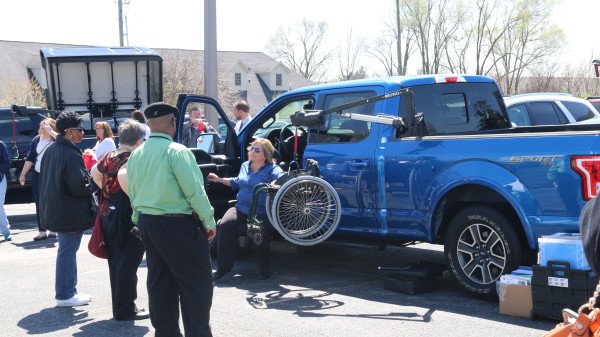 “This is an exciting new development in our Alternative Financing Program, and we are now able to offer more to Hoosiers in need,” said INDATA Project Director Brian Norton. “In addition to assistive technology devices, Indiana residents can use the AFP to purchase an adaptive vehicle, assisting them in becoming more independent and productive in their community.”
“This is an exciting new development in our Alternative Financing Program, and we are now able to offer more to Hoosiers in need,” said INDATA Project Director Brian Norton. “In addition to assistive technology devices, Indiana residents can use the AFP to purchase an adaptive vehicle, assisting them in becoming more independent and productive in their community.”
All Indiana residents who have a documented disability and who need assistive technology can apply for the AFP loans, ranging from $500 to $35,000. If the person with the disability is under 18 years old, a legal guardian may complete the application process.
“Thirty or forty years ago, it was really a struggle for people with disabilities to get around,” Pritchard said. “They relied on public transportation or someone else had to take them where they wanted to go. Now there are new vehicles, new adaptations, new standards … and new freedom.”
“Most people are highly motivated to drive again,” she said. “It’s how they get around, how they participate in their communities and do the things they want to do. Getting behind the wheel is either a welcome return or a new adventure, and they want — and deserve — that chance.”
For more information and to begin the loan process, call 888-466-1314 or email tech@eastersealscrossroads.org.

After 20 years of MS treated from 2000 to 2006 with Rebif(efficient to that year) and then Avonex(not efficient to calm down my lesions’ number increase) i found this website Natural herbs enter . just 3 months ago, and their current Ayurvedic health tech to help curb/manage it. Decided to give it a try and it has made a tremendous difference for me I had improved walking balance, muscle strength and improved vision, always thankful for nature that helps in managing these terrible diseases. Thank you for giving those of us with Multiple sclerosis a new hope.
My husband had MS-4 programme about 4 months ago. he sleeps soundly, works out frequently, and is now very active. It doesn’t make the MS go away but it did give him better quality of life. we got the treatment from vine health centre